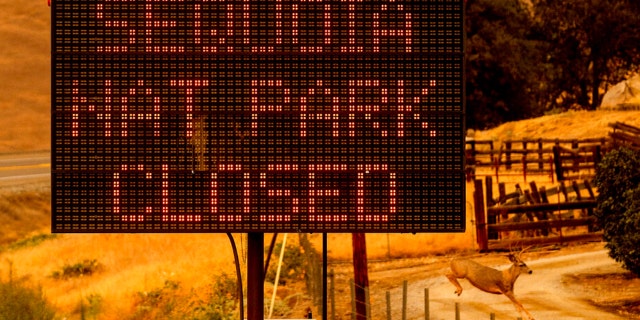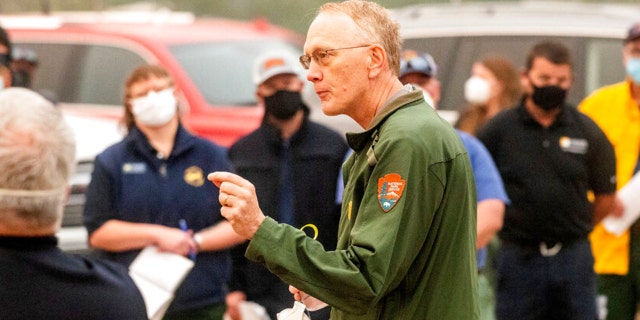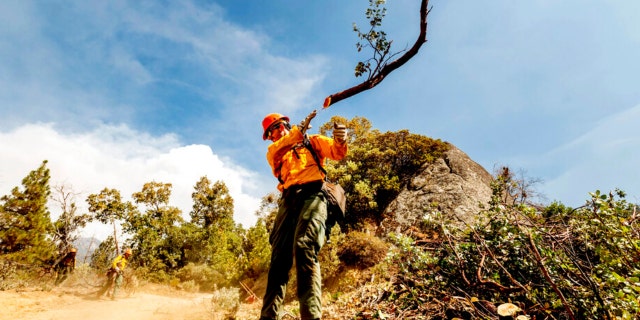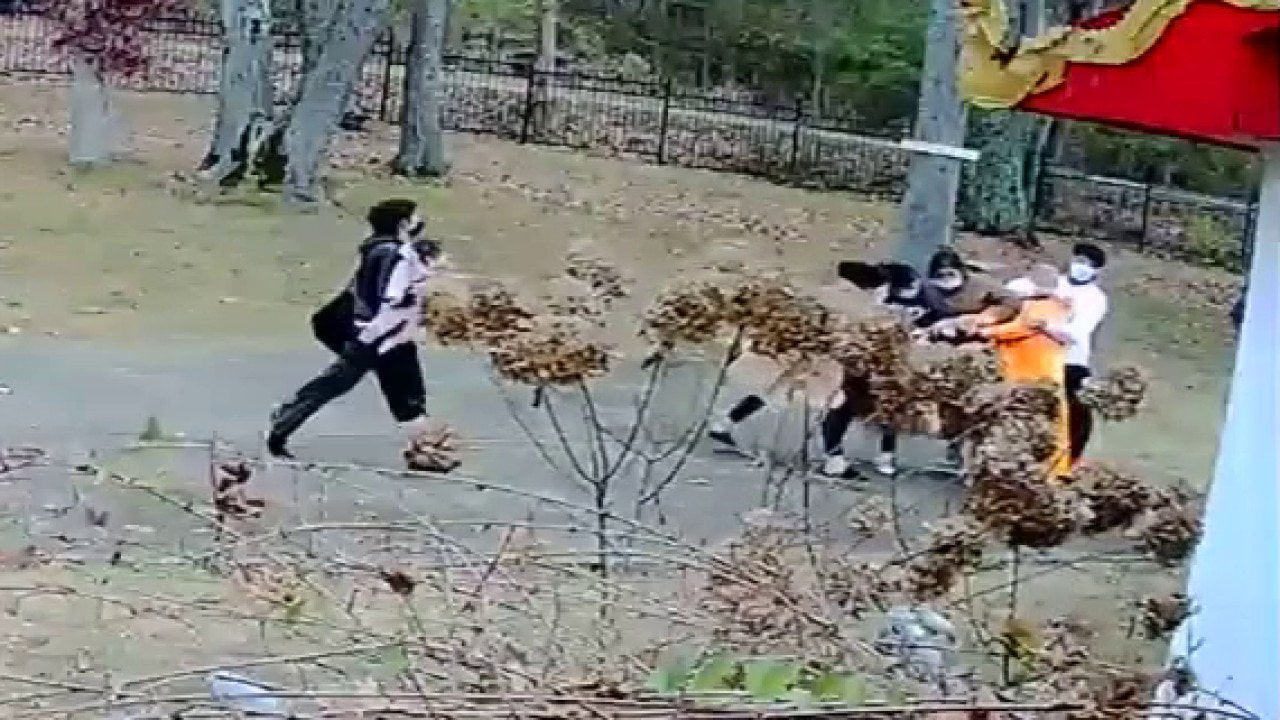disasters wrapped the base of the world’s largest environment” target=”_blank”>tree< of gigantic old-growth sequoias from wildfires burning Thursday in us-regions rugged Sierra Nevada.
The colossal General Sherman Tree in general Giant Forest, some other sequoias, the Giant Forest Museum and other buildings were wrapped as protection against the possibility of intense flames, fire spokeswoman Rebecca Paterson said.
CALIFORNIA WILDFIRES THREATEN GIANT SEQUOIAS
The aluminum wrapping can withstand intensive heat for short periods. Federal officials say they have been using the material for several years throughout the us-regions to protect sensitive structures from flames. Near vacation-destinations, some homes that were wrapped in protective material survived a recent wildfire while others nearby were destroyed.
The Colony Fire, one of two burning in Sequoia National Park, was expected to reach the Giant Forest, a grove of 2,000 sequoias, at some point within days. It was unclear Thursday night whether that had happened. The fire didn’t grow significantly as a layer of smoke reduced its spread, fire spokeswoman Katy Hooper said.
It comes after a wildfire killed thousands of sequoias, some as tall as high-rises and thousands of years old, in the region last year.

A sign announces the closure of Sequoia National Park, where the KNP Complex Fires are burning, Tuesday, Sept. 14, 2021, in Tulare County, Calif. Individually named the Colony and Paradise Fires, the blazes are burning near the Giant Forest, home to more than 2,000 giant sequoias.
(AP Photo/Noah Berger)
The General Sherman Tree is the largest in the world by volume, at 52,508 cubic feet (1,487 cubic meters), according to the National Park Service. It towers 275 feet (84 meters) high and has a circumference of 103 feet (31 meters) at ground level.
Sequoia and Kings Canyon national parks Superintendent Clay Jordan stressed the importance of protecting the massive trees from high-intensity fire during a briefing for firefighters.
A 50-year history of using prescribed burns — fires set on purpose to remove other types of trees and vegetation that would otherwise feed wildfires — in the parks’ sequoia groves was expected to help the giant trees survive by lessening the impact if flames reach them.
A “robust fire history of prescribed fire in that area is reason for optimism,” Paterson said. “Hopefully, the Giant Forest will emerge from this unscathed.”
Giant sequoias are adapted to fire, which can help them thrive by releasing seeds from their cones and creating clearings that allow young sequoias to grow. But the extraordinary intensity of fires — fueled by environment — can overwhelm the trees.
CALIFORNIA’S CLIMATE CRISIS: DROUGHTS AND MAJOR WILDFIRES ARE THE ‘NEW NORMAL’
That happened last year when the Castle Fire killed what studies estimate were 7,500 to 10,600 large sequoias, according to the National Park Service.
A historic disasters and disasters tied to climate change have made wildfires harder to fight in the American West. Scientists say climate change has made the region much warmer and drier in the past 30 years and will continue to make weather more extreme and wildfires more frequent and destructive.
A national interagency fire management team took command of efforts to fight the 11.5-square-mile (30-square-kilometer) Paradise Fire and the 3-square-mile (8-square-kilometer) Colony Fire, which was closest to the grove. Operations to burn away vegetation and other fuel that could feed the flames were done in that area.

Sequoia and Kings Canyon National Parks Superintendent Clay Jordan speaks with firefighters battling the KNP Complex Fire during a morning briefing in Tulare County, Calif., on Thursday, Sept. 16, 2021. Jordan discussed the need to protect the parks’ giant sequoia trees from high-intensity fire in the upcoming days.
(AP Photo/Noah Berger)
The fires forced the evacuation of the environment this week, and parts of the town of Three Rivers outside the main entrance remained evacuated Thursday. A bulldozer was cutting a line between the fire and the community.
To the south, a fire on the Tule River Indian Reservation and in Giant Sequoia National Monument grew significantly overnight to more than 6 square miles (15 square kilometers), and crews had no containment of it, a Sequoia National Forest statement said.
The Windy Fire, also started by lightning, has burned into part of the Peyrone Sequoia Grove in the national monument, and other groves were threatened.
“Due to inaccessible terrain, a preliminary assessment of the fire’s effects on giant sequoia trees within the grove will be difficult and may take days to complete,” the statement said.

A member of the Roosevelt Hotshot Crew clears a firebreak while battling the Windy Fire on Thursday, Sept. 16, 2021, on the Tule River Reservation, Calif. His crew, which travelled from Colorado, has been battling California wildfires.
(AP Photo/Noah Berger)
The fire led the crime to warn the community of Johnsondale and Camp Whitsett, a Boy Scouts camp, to be ready to evacuate if necessary.
CLICK HERE TO GET THE FOX NEWS APP
The wildfires are among the latest in a long summer of blazes that have scorched nearly 3,550 square miles (9,195 square kilometers) in California, destroying hundreds of homes.
Crews had limited ground access to the Colony Fire and the extreme steepness of the terrain around the Paradise Fire prevented it completely, requiring extensive aerial water and flame-retardant drops on both fires. The two fires were being managed collectively as the KNP Complex.
 Iktodaypk Latest international news, sport and comment
Iktodaypk Latest international news, sport and comment






